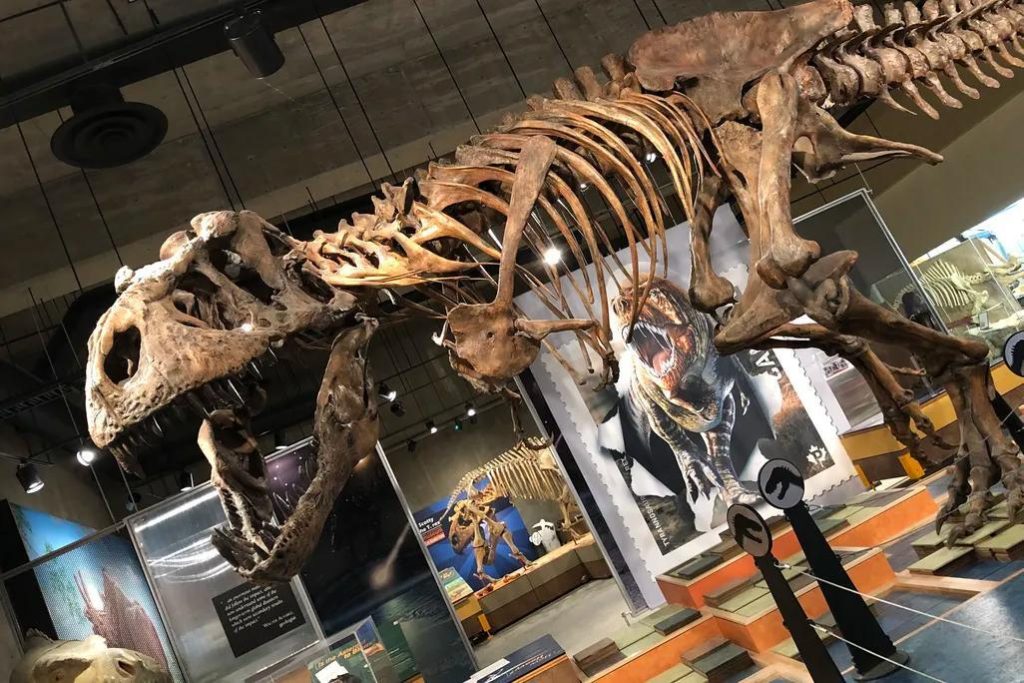
Physicist finds preserved blood vessels in world’s largest T rex
The discovery of preserved blood vessels in the world’s largest Tyrannosaurus rex fossil has sent shockwaves through the scientific community. The find, made by a team of researchers led by physicist Dr. Scott Persons, has shed new light on how dinosaurs recovered from injuries. The preserved blood vessels, located in the rib bone of ‘Scotty’, the largest T rex fossil housed at Canada’s Royal Saskatchewan Museum, offer a unique glimpse into the biology of these prehistoric creatures.
The discovery was made possible by advanced imaging techniques, including CT scans and 3D modeling, which allowed the researchers to visualize the intricate network of blood vessels within the fossil. The preserved vessels were found in a rib bone that had been fractured, and the team believes that they formed during the incomplete healing process of the fracture. This provides valuable insights into how the dinosaur recovered from its injury.
The finding is significant because it offers a unique opportunity to study the biology of dinosaurs in a way that was previously impossible. By comparing the preserved blood vessels in Scotty’s rib bone with those found in other dinosaurs and modern birds, the researchers hope to gain a better understanding of the evolutionary relationships between these species.
“The discovery of preserved blood vessels in a dinosaur is a game-changer,” said Dr. Persons in an interview. “It allows us to study the biology of these creatures in a way that was previously impossible. We can learn a great deal about how they lived and how they recovered from injuries.”
The discovery of preserved blood vessels in a dinosaur is not without its challenges. The fossil record is often fragmented and incomplete, making it difficult to reconstruct the biology of these ancient creatures. However, the use of advanced imaging techniques has allowed the researchers to overcome these challenges and gain a new understanding of the biology of dinosaurs.
In addition to the discovery of preserved blood vessels, the team also found evidence of a healing process that was similar to that seen in modern birds. The rib bone had been fractured, and the team believes that the blood vessels formed during the incomplete healing process of the fracture. This provides valuable insights into how the dinosaur recovered from its injury.
The finding is significant because it offers a new perspective on the biology of dinosaurs. For too long, dinosaurs have been viewed as simply large, reptilian creatures that were more interested in eating and fighting than in healing and recovering from injuries. However, the discovery of preserved blood vessels in Scotty’s rib bone suggests that dinosaurs were capable of complex biological processes, including the healing of fractures.
The discovery of preserved blood vessels in a dinosaur is a significant finding that has the potential to shed new light on the biology of these prehistoric creatures. By comparing the preserved blood vessels in Scotty’s rib bone with those found in other dinosaurs and modern birds, the researchers hope to gain a better understanding of the evolutionary relationships between these species.
The finding is also significant because it highlights the importance of preserving the fossil record. The fossil record is a valuable resource that provides a window into the past, allowing us to learn about the biology and behavior of ancient creatures. However, the fossil record is often fragmented and incomplete, making it difficult to reconstruct the biology of these ancient creatures. The discovery of preserved blood vessels in Scotty’s rib bone is a reminder of the importance of preserving the fossil record and the value of the information that it contains.
In conclusion, the discovery of preserved blood vessels in the world’s largest T rex fossil has sent shockwaves through the scientific community. The finding offers a new perspective on the biology of dinosaurs, highlighting their ability to heal and recover from injuries. The discovery also highlights the importance of preserving the fossil record, which provides a valuable resource for scientists to learn about the biology and behavior of ancient creatures.
Source:






